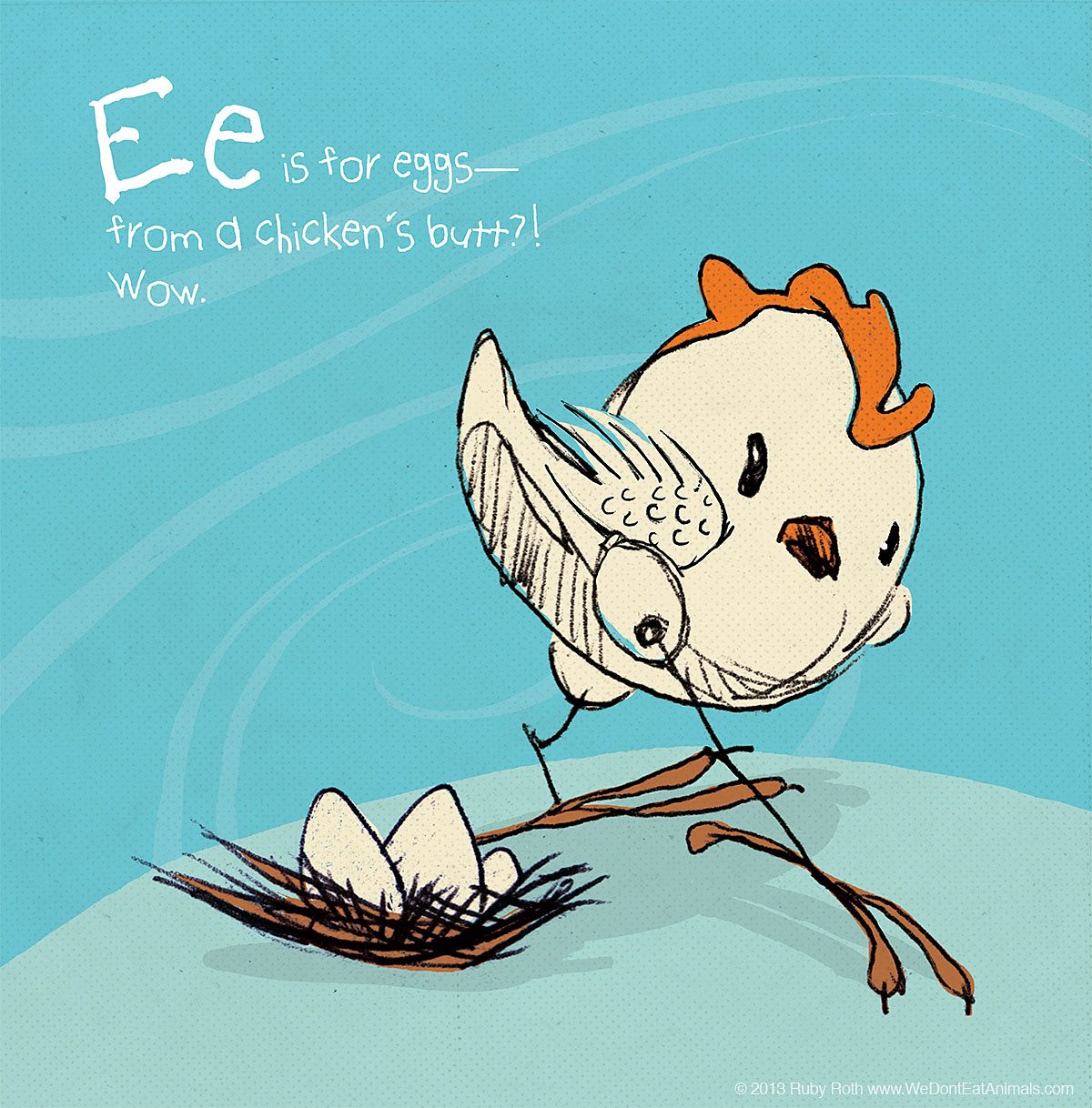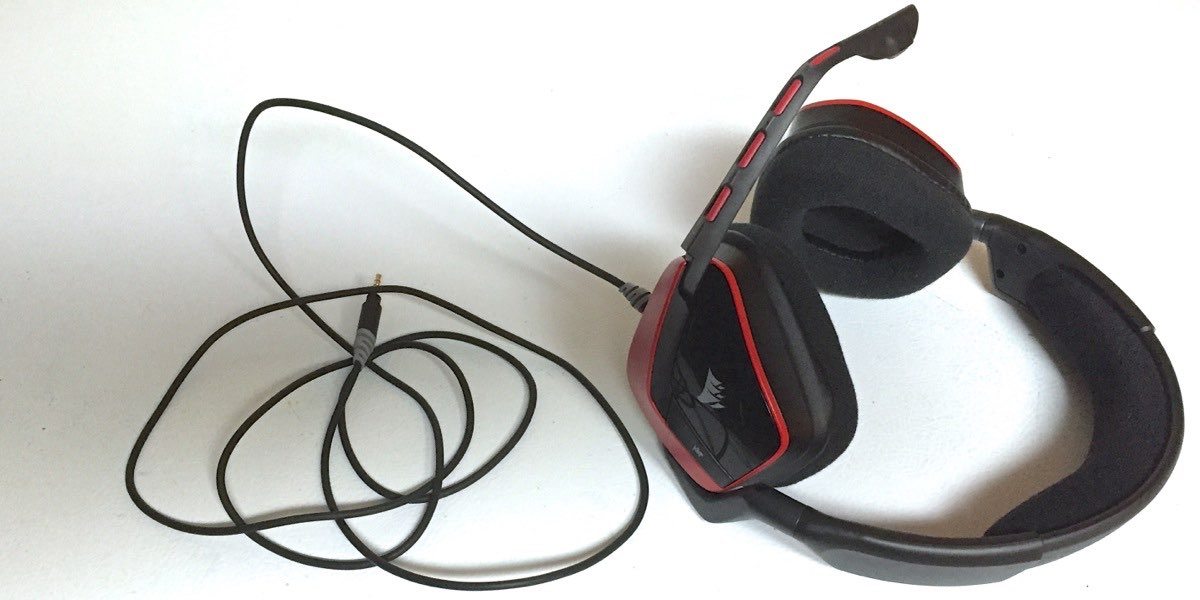
Ruby Roth is the author of three children’s books–That’s Why We Don’t Eat Animals, Vegan Is Love, and, her latest, V Is for Vegan: The ABCs of Being Kind.
 We attended a lecture given by Roth here in Seattle, Washington, last week and purchased V is for Vegan for our two-year-old. The art and messages are perfect for younger kids.
We attended a lecture given by Roth here in Seattle, Washington, last week and purchased V is for Vegan for our two-year-old. The art and messages are perfect for younger kids.
 The style of the book is very playful and sketchy, something we and our son really love. There is plenty of humor throughout the book–“E is for eggs–from a chicken’s butt?!”–that is age appropriate and caused plenty of giggles in our home.
The style of the book is very playful and sketchy, something we and our son really love. There is plenty of humor throughout the book–“E is for eggs–from a chicken’s butt?!”–that is age appropriate and caused plenty of giggles in our home.
 The book also addresses common questions and issues that vegetarian and vegan kids might face in a way that makes it easy for them to understand and possible explain to their friends. Roth’s books are not heavy-handed or “shoving a lifestyle down your throat”; they make these potentially difficult discussions about the real world easier for parents.
The book also addresses common questions and issues that vegetarian and vegan kids might face in a way that makes it easy for them to understand and possible explain to their friends. Roth’s books are not heavy-handed or “shoving a lifestyle down your throat”; they make these potentially difficult discussions about the real world easier for parents.
Roth was kind enough to do a small interview with me after we met at the lecture.
GeekDad: We adore your books in our home, both for their amazing art and for the message of love and compassion. What inspired you to start making books for kids, and what is your main goal with your books?
Ruby Roth: Thank you! I was teaching art to elementary school students who were all very curious about why I wasn’t eating the string cheese or drinking the milk they were served at recess. I tried to find a children’s book that would help me explain, but they were all about a talking animal or a talking vegetable which I couldn’t stand! It took so much away from both the real emotional lives of animals and my students’ intelligence and street smarts. I had degrees in art and American Studies, and had long been involved in social justice activism, so I decided to meld those two interests and create the book I wanted to read–one that respected the capabilities of kids enough to speak truthfully to them.
GD: Are your books solely for vegan parents looking to help explain veganism to their children?
RR: Yes, mostly, but anyone, vegan or not, should be able to read them without hesitation. The “we” in That’s Why We Don’t Eat Animals is us vegetarians and vegans. But to anyone reading it, it can also sound like a friend explaining their veg habits, so a teacher could read it to their students during a social studies lesson about various food cultures without making anyone feel excluded. All three books were written for the veg community specifically, but, ultimately, they are about choices that anyone, on any given day, can make to help animals and the planet.
GD: Your first two books, That’s Why We Don’t Eat Animals and Vegan Is Love were aimed at older (6-10 year-old) children. Why did you make V Is for Vegan for a younger audience, and what did you change about your approach for the younger audience?
RR: V Is for Vegan: The ABCs of Being Kind is a funny, rhyming book with super simple illustrations instead of full-value paintings like the other books. I don’t think it’s ever too early to start talking about how our choices affect the public realm, but I wanted to start the youngest of vegan kids out with something that was purely fun and light, easy to absorb visually, and something that would make them laugh. Then as they grow, they can get into the personal agency issue in the other books.
GD: A lot of your critics focus on one of two things–the potential harm of a vegan diet or the potential harm of being honest with our kids about where food comes from. What do you say to people who think a vegan diet can be harmful, especially to children (“Where do they get their protein?!”)? And what do you say to people who think our children can’t handle the truth about meat and dairy, circuses and zoos, and animal testing?
RR: I say that the standard American diet should be disqualified for its failures–it’s clearly not working, evidenced by the amount of chronic disease, attention deficit disorders, obesity, asthma, anxiety, over-medication, early onset puberty, and so many other conditions that are affecting kids today. People can point fingers to many other causes, but food is the number one way we affect our own bodies and minds, positively or negatively. I think there is also a misconception that veganism is the standard American diet minus meat and dairy–which leaves nothing upon nothing. But anyone looking into the vegan food pyramid or following vegan nutritional recommendations will find themselves eating a wider variety of nutrient-dense foods and even supplements that the majority of the population is deficient in.
And if meat and dairy are too scary to talk about, they’re too scary to eat! I’ve never once come across a child who was overwhelmed by a light, but honest, discussion of animal agriculture or zoos or circuses or animal testing. If you speak frankly to kids, they feel like you’re letting them in on a secret, and they feel empowered by that trust. They react to the realities with a great sense of diplomacy, asking questions, reflecting, and giving insight. They want to help animals and the planet. They want to find solutions. They are happy to eat healthier when they truly understand the motives and what’s at stake.
GD: I had the pleasure of listening to you speak last weekend, and one thing that really stuck with me is when you said that vegan thinking, whether or not someone actually is a vegan, is really critical thinking. I think all of us geek parents on GeekDad can agree that critical thinking is sorely lacking and severely needed. Can you explain how vegan thinking and critical thinking are linked?
RR: Thinking “vegan” truly exponentiated my academic, political, and spiritual education. When you view any knowledge, belief, or practice through the lens of veganism, you have to reconcile any hypocrisies or flaws in thinking–be it in your own internal life or a public, social system. Do we salute environmentalism and also contribute to the most environmentally destructive system in place today? Do we practice mindfulness and then feed on tortured animals? Do we call for change but then can’t stand to make any ourselves?
I think veganism makes the difference between fractional thinking and systemic thinking, where solving any one given problem necessitates looking at solutions from practical, physical, biological, economic, environmental, and ethical points of view. It’s the only way to solve problems at their root. Just recently, a federally appointed panel of nutritionists decided for the first time to factor environmental sustainability in its dietary recommendations. And the meat and dairy industry is up in arms, of course, insisting that environmental recommendations only be made by environmental councils. Even Secretary of Agriculture Tom Vilsack (long known to be loyal to meat, dairy, and the chemical industry) is stating that it’s “against the law” for nutritionists to consider the environment. The defect and corruption are transparent. We’ll never solve any social problems by treating them fractionally. That’s why I love veganism so much–it’s a people’s movement that will be more effective than any legislation ever could be. Like I say in Vegan Is Love, “We don’t have to wait to grow older, for laws to change, or for presidents to be elected. We can begin right now.”
GD: Mayim Bialik is one of the few popular scientists I can think of who actively promotes veganism, yet folks like Neil Degrasse Tyson, Bill Nye, and Cara Santa Maria–all scientists that I follow and enjoy listening to–talk about skepticism and critical thinking and how we need to take action on global warming and then tweet about bacon cheeseburgers. With so much science telling us that plant-based diets are better for our health and that meat and dairy are the leading cause of global warming, why do you think there is such a dearth of popular scientists promoting veganism?
RR: The discrepancy is shocking because we think the brightest of minds should be knowledgeable about systemic solutions. But how and when–if ever–we learn about the impact of meat and dairy is so chance, our food system so hidden and ingrained through law and other constructions, that one might never come across the realities or consider alternatives unless you specifically seek them out or are given reason to (often in a health crisis–Bill Clinton, for example).
The smartest people in the most prestigious of positions are no more likely to consider veganism than anyone else–they are socialized, their choices informed by the same culture as everyone else. Chicken, cow, pig, and fish are packaged and marketed to us as “natural,” biologically-ordered, God-given protein sources. Four out of the thousands of amino acid sources available to us, including those we’re surrounded by–insects, birds, our dogs (we’ve been told what our bodies crave–cow, yes, but never cat–not even when they scurry across the house, potentially triggering our would-be instincts to pounce). For the majority of people, this government- and industry-sanctioned construction is so ingrained, that veganism is not even on the radar of possibilities. Until someone points out that our eating habits don’t match our morals and values–and we’re intellectually curious enough to hear what comes next.
GD: Thank you so much for your time.
RR: Thank you for such great questions.
All of Roth’s books are about raising kids who are compassionate and inquisitive about the status quo. I plan to buy copies as gifts for the foreseeable future. You can learn more about Roth and her books on her website wedonteatanimals.com.




